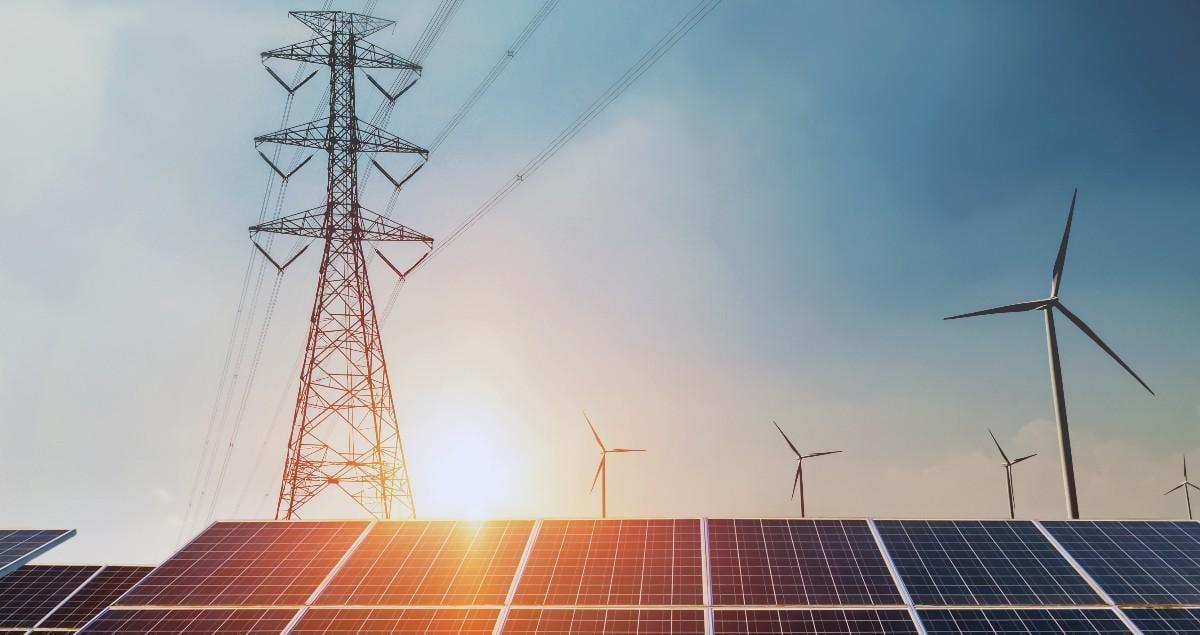How hydrogen can help balance the electricity grid

This article was previously published in our newsletter, if you're not already a subscriber, sign up here.
In a world that is seeking to rapidly decarbonize, renewable energy can and must become the mainstay of power generation. Rightly, policy and finance have been mobilized across the globe to increase the construction of renewable projects at the rates required to meet our net zero goals. However, this brings with it key challenges, due to their intermittency as a power source, and the impact this has on our electricity grid systems.
The demand for power is increasing alongside the capacity of renewable-powered generation. In 2023, 107GW of renewables were integrated into energy grids according to the International Energy Agency (IEA), the largest increase recorded to date. According to the IEA’s Renewables 2024 report, they will account for almost half of global electricity generation by 2030 –but, even that rapid growth will not be sufficient to meet demand that is surging due to new infrastructure such as data centers.
Clean hydrogen is increasingly recognized as a key enabler of the energy transition, both as a fuel to decarbonize heavy industry, that cannot be simply electrified, and as a storage medium for renewable energy. Another key application for hydrogen, however, is its potential to stabilize electricity grids as they grow and transform.
The need to stabilize grids
Grid stabilization has emerged as a key challenge in the face of increasing demands on the energy grid owing to the rapid increase in installed capacity from renewable sources such as solar and wind. In traditional energy systems fossil fuels, like coal, and gas, as well as low carbon sources such as nuclear, provide reliable and constant stability to the grid, known as an energy baseload. However, renewables are by nature ‘intermittent’, with their output dependent on the weather, and grid operators need to compensate for their variations in output.
As the world transitions away from fossil fuels, such stabilization services must ideally be carbon neutral (or negative). Further, they need to act in the same way as baseload power – be controllable, reliable, and dispatchable quickly - to meet the demands of a modern electricity system.
Dispatchable energy is currently provided by gas turbine power plants, which are the favored choice of grid regulating agencies to balance supply and demand. But while gas turbines are the most efficient option, questions remain about their long-term utilization in a future, carbon-free world.

Clean hydrogen is both a plentiful and versatile source of high-density energy (behaving in a similar way as gas), but it can also be used for energy storage; storing clean power for days, weeks and even months. Its ability to provide a so-called ‘seasonal store’ of electricity, acting like baseload power, and buffering the intermittent energy supplied by renewables to provide all-important grid stability, gives it a unique role to play.
Furthermore, because of its ability to store energy for a long time, hydrogen can capture so-called ‘curtailed’ electricity – generated when renewables produce more than the grid can immediately absorb and which is currently lost. This increases the efficiency of renewable energy by storing otherwise ‘wasted’ low carbon electricity and then feeding it back into the grid on days when the wind doesn’t blow and the sun doesn’t shine.
Multiple paths for the Energy Transition
Working in tandem with renewables, the potential of clean hydrogen in the entire energy value chain is vast. And while we know there is no single path to the energy transition, the energy systems of tomorrow will require an integrated ecosystem that is not only built on innovation, but on creating multiple domestic energy transitions, working in tandem to achieve net zero goals.
It will take extraordinary collaboration and urgency – working hand-in-hand with our industry partners, policymakers and all stakeholders – to accelerate global decarbonization before it is too late. We have the energy transition technologies that are needed now, and are making rapid advancements on new innovations, to solve the energy trilemma of sustainability, affordability and energy security.
We are ready and well positioned to help our customers across the world achieve their clean energy ambitions.
![]()
Discover more about hydrogen storage project in Utah





